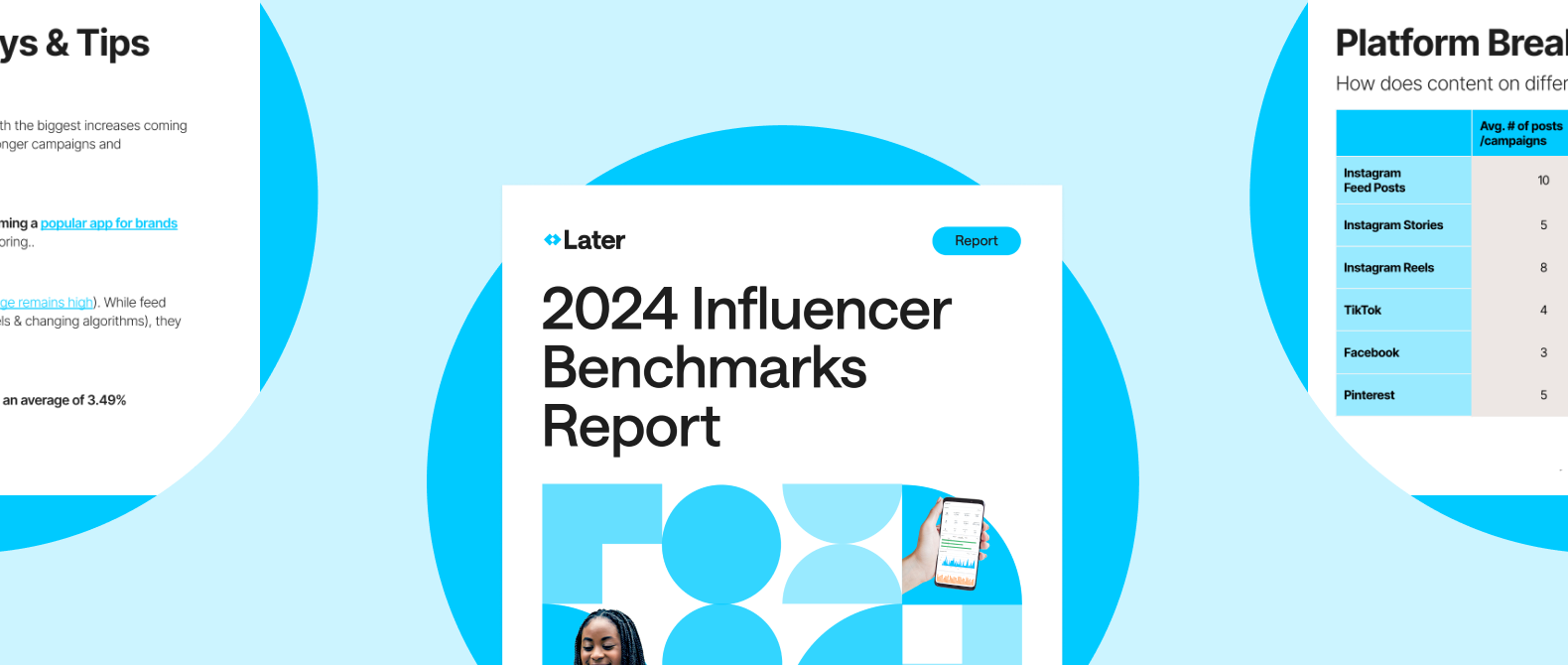Report
Influencer Marketing Statistics & Benchmarks in 2024

Enter your details to download!
This Influencer Marketing Benchmarks Report Includes:
Industry, platform, and influencer breakdowns
Six-month comparison analysis and charts
Benchmarks for industries like cosmetics, CPG, food, and more
Average costs and engagement rates for influencers — from Nano to Macro
Insight into campaign performance on Instagram, TikTok, Facebook, Pinterest, and YouTube
Key metrics including average impressions, number of campaigns, CPE, CPM, and more
Use This Influencer Marketing Benchmarks Report To:
Set goals for upcoming influencer campaigns
Optimize your strategy and budget
Understand industry trends
Discover how you stack up against your competition — download now.
Created by Pros

Later Team
Later's team of social media experts have a wealth of experience in creating content for various channels, partnering with creators, and developing social strategies for brands around the world. From YouTube to Instagram; blog posts to newsletters; courses to reports, Later has got you covered with the latest social media trends, tips, and resources to help your brand grow.
Share
Influencer Marketing Benchmarks Report
Get the latest industry, platform, and influencer benchmarks to set goals for your influencer marketing campaigns.
Your Influencer Marketing Statistics & Benchmarks in 2024 is on its way to your inbox!
Can't wait? Download it here now.
Grow your revenue with trusted influencers.
